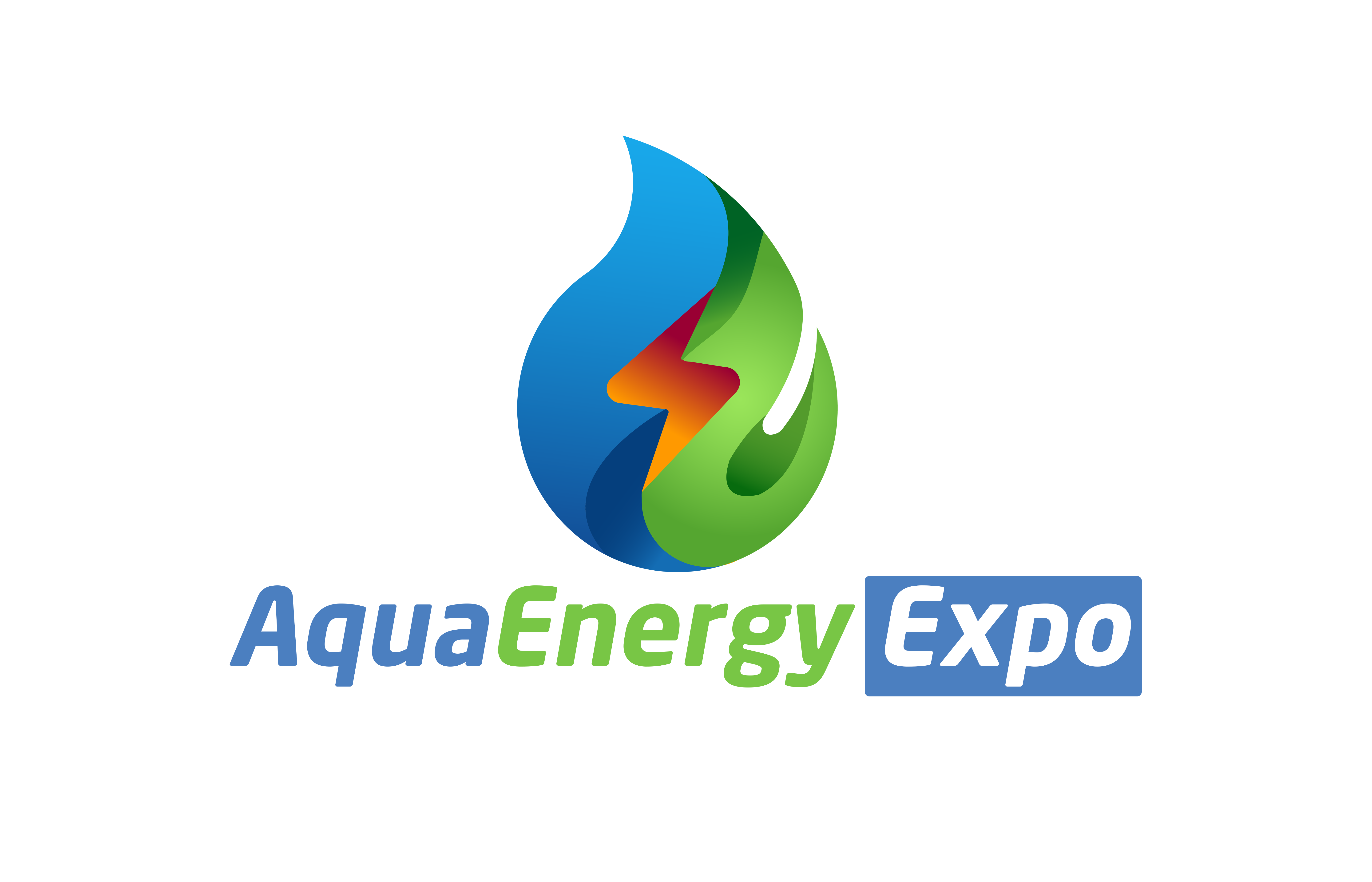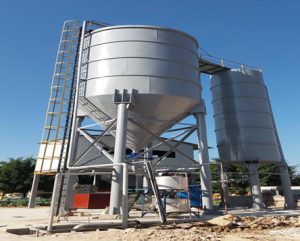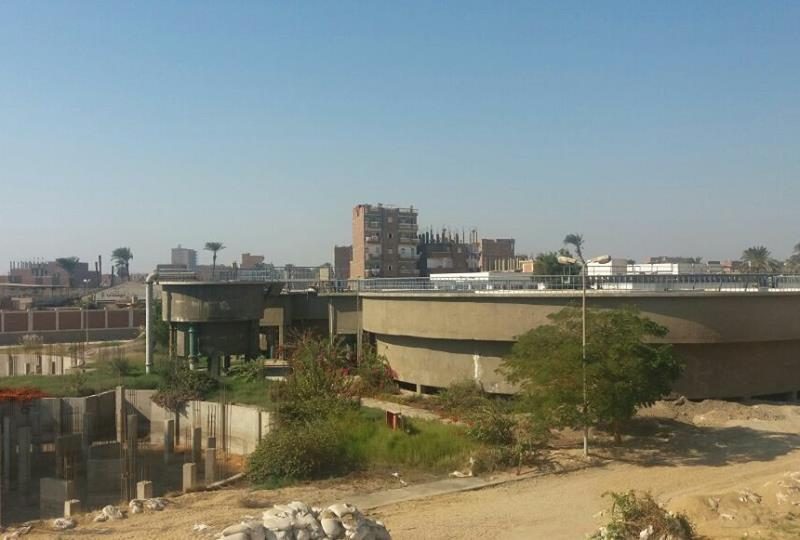Introduction
Generally the term of ceramics (ceramic products) is used for inorganic materials (with possibly some organic content), made up of nonmetallic solid prepared by the action of heat and subsequent cooling. Ceramic materials may have a crystalline or partly crystalline structure, or may be amorphous (e.g., a glass). Because most common ceramics are crystalline, the definition of ceramic is often restricted to inorganic crystalline materials, as opposed to the noncrystalline glasses.
The traditional ceramic industries are sometimes referred to as the clay products or silicate industries. In recent years new products have been developed as a result of the demand for materials that withstand higher temperatures, resist greater pressure, have superior mechanical properties, possess special electrical characteristics, or can protect against corrosive chemicals.
Ceramic industry consumes large amounts of water in molds washing and final products and in polishing of final products that generates large amount of polluted water that contains harmful chemicals with negative impact on environment.
Pollution aspects related to the ceramic industry are mainly due to dust emission both in workplace and in ambient air. Effluents are characterized by higher concentration of suspended solids.
Large volumes of wastewater are generated during the process. Process wastewater is generated mainly when clay materials are flushed out and suspended in flowing water during the manufacturing process and equipment cleaning. The added directly to ceramic body mixes; is subsequently evaporated into the air during the drying and firing stages.
Different conventional physicochemical treatments have been used to treat the ceramic wastewater. Removal of pollutants produced by industrial plants is requirement for reuse of water and to obtain environmental standards. The pollutants in the Ceramic wastewater are different suspended solids, dissolved solids, chemical oxygen demand and Low Biochemical oxygen demand. This wastewater caused serious environmental problems due to their high color, large amount of suspended solids, and high chemical oxygen demand. So, they have to be removed before being discharged into the environment.
Limits of pollutants in wastewater are depending on the type of receiving water body. The parameters that should be monitored and/or inspected are biochemical oxygen demand BOD, chemical oxygen demand COD, pH, temperature, total suspended solids TSS, and total dissolved solids TDS,
The problem of ceramic wastewater utilization may be solved with different treatment techniques for reuse or recycle / treated wastewater and recovery of treated water.
Different physicochemical treatments have been used to treat the Ceramic wastewater such as coagulation with mineral coagulants and organic coagulants aids followed by sedimentation and sand filtration. The proposed system of the study under investigation is to treat the effluent for reuse or discharge into the receiving body needs the following units: screens, equalization tank, feed pump, flow regulator, mixing tank, flocculation tank and clarifier.
Effluents of Ceramic Industry
Effluents of ceramic industry are characterized by:
- Highest levels of water pollution that generated from washing of molds and final products to remove any suspended impurities on the pieces. Impurities are removed after the pouring stage and before the drying stage.
- Spent lube oil from garage and workshops if discharged to sewer will give oily wastewater.
- Tile polishing generates a large quantity of wastewater high in suspended solids and settable solid.
- Industrial wastewater.
Typical effluent characteristics of the Egyptian ceramic industry are shown in the following Table 1.
Table1: Typical effluent characteristics of the Egyptian ceramic industry [1].
| Parameter | Average analysis (mg/liter) |
| pH | 7.5 |
| Total suspended solid | 700 |
| Total dissolved solid | 220 |
| Biological oxygen demand | 30 |
| Chemical oxygen demand | 400 |
| Oil and grease | 25 |
Effluent guidelines are applicable for direct discharges of treated effluents to surface waters for general use. Site-specific discharge levels may be established based on the availability and conditions in the use of publicly operated sewage collection and treatment systems or, if discharged directly to surface waters.
Ceramic Industry Wastewater [1].
Wastewater from ceramic industry generated from all industrial activities in the ceramic plants.
- Industrial process wastewater
Process wastewater is mainly generated from cleaning water in preparation and casting units, and various process activities (e.g. glazing, decorating, polishing, and wet grinding). Process wastewater is characterized by turbidity and coloring, due to the very fine suspended particles of glaze and clay minerals. The potential pollutants of concern include suspended solids (e.g. clays and insoluble silicates), suspended and dissolved heavy metals (e.g. lead and zinc), sulfates, boron, and traces of organic matter.
- Process Wastewater Treatment
Techniques for treating industrial process wastewater in ceramic industry include flow and load equalization with pH adjustment; sedimentation for suspended solids reduction using settling basins or clarifiers; multimedia filtration for reduction in nonsettleable suspended solids; dewatering and disposal of residuals in landfills, or if hazardous in designated hazardous waste disposal sites. Additional engineering controls may be required for advanced metals removal using membrane filtration or other physical/chemical treatment technologies.
Tables 2 present effluent guidelines for ceramic industry sector guideline values for process effluents in this sector are indicative of good international industry practice as reflected in relevant standards of countries with recognized regulatory frameworks. These levels should be achieved, without dilution, at least 95 percent of the time that the plant or unit is operating, to be calculated as a proportion of annual operating hours. Deviation from these levels in consideration of specific, local project conditions should be justified in the environmental assessment [2].
Table 2: Effluent level for ceramic tile [2].
| Pollutant | Units | Guideline value |
| pH | – | 6-9 |
| BOD5 | mg/l | 50 |
| TSS | mg/l | 50 |
| Oil & Grease | mg/l | 10 |
| Lead | mg/l | 0.2 |
| Cadmium | mg/l | 0.1 |
| Chromium (Total) | mg/l | 0.1 |
| Cobalt | mg/l | 0.1 |
| Copper | mg/l | 0.1 |
| Nickel | mg/l | 0.1 |
| Zinc | mg/l | 2.0 |
| Temperature increase | ºC | < 3º |
Selections of Industrial Wastewater Treatment Processes
The Selections of industrial wastewater treatment processes or a combination of processes depends on:
- The characteristics of industrial wastewater, these consider the form of the pollutant, i.e. suspended colloidal or dissolved, the biodegradability, and the toxicity of the organic or inorganic components.
- The required effluent quality .consideration should also give to possible restriction such as an effluent bioassay aquatic toxicity limitation.
- The possibility of reuse or recycle of treated effluents.
- The costs and availability of land for any given wastewater treatment problem.
High operating costs due to the use of chemical substances and high amount of sludge and its disposal costs are shown as the important disadvantages of chemical treatment [3].
Therefore, researchers have focused on new alternative methods or alternative coagulants to reduce chemical usage by improving discharge standard with adding low cost substance.
Examples of wastewater of ceramic industry around the World
Ceramic industry wastewaters contain high concentration of suspended & total solids and significant amount of dissolved organics resulting in high BOD or COD loads. Suspended solids can be removed from the wastewater by chemical precipitation. However, dissolved BOD/COD compounds can only be removed by biological or chemical oxidation [4].
In a ceramic factory in Turkey, the effluent wastewater from chemical sedimentation stage was having high COD average 720 ppm. An experiment using biological activated sludge unit on a lab scale was applied to this effluent. The best results were obtained with θc= 20h of hydraulic & θc=20 days of solids retention times (sludge age) resulting in effluent COD concentration of 40 mg/ 1 from a feed wastewater of 270 mg/1 COD content. The suspended solids content of the activated sludge effluent was approximately 52 mg/1[5].
In Malaysia, boron is extensively used in the ceramic industry for enhancing mechanical strength of the tiles. The discharge of wastewater containing boron to the environment causes severe pollution problems. Boron is also dangerous for human consumption & causes organism’s reproductive impediments if the safe intake level is exceeded. Current methods to remove boron include ion- exchange, membrane filtration, and precipitation- coagulation, biological and chemical treatment. These methods are costly to remove boron from the wastewater and hence infeasible for industrial wastewater treatment. Adsorption- flocculation mechanism is proposed for boron removal from ceramic wastewater by using Palm Oil Mill Boiler (POMB) bottom ash and long chain polymer or flocculants. Ceramic wastewater is turbid and milky in color which contains 15 mg/ L of boron & 2000mg / L of suspended solids.
The optimum operating condition for boron adsorption on POMB bottom ash & flocculation using polymer were investigated. Adsorption isotherm of boron in bottom ash was also investigated to evaluate the adsorption capacity. Adsorption isotherms modeling were conducted based on Langmuir & Freundlich isotherms. The results show that coarse POMB bottom ash with particle size larger than 2 mm is a suitable adsorbent where boron is removed up to 80% under the optimum conditions ( pH= 8.0, dosage = 40 g bottom ash 300 ml wastewater, residence time= 1 h). Under the optimum operating conditions, the boron and suspended solids concentration of the treated wastewater were reduced to 3 mg /L & 5 mg /L respectively, satisfying the discharge requirements by Malaysia Department of Environment (DOE). The modeling study shows that the Adsorption isotherm of boron onto POMB bottom ash conformed to the Freundlich Osotherm. The proposed method is suitable for boron removal in ceramic wastewater especially in regions where POMB bottom ash is abundant [6].
Example in Egypt
The objective of this work study the effect of industrial effluents on soil chemical properties when faba bean was grown on soils irrigated with the effluent of ceramic, paper & starch factories. Results showed increases in soil pH, ECe (soil salinity) and soil organic matter (OM) [7].
Industrial liquid waste of the 10th of Ramadan city is estimated about 1700 m3/day from the dying industry, 370 m3/day from the ceramics 700 m3/day from the paper and 2000 m3/day from starch industry [43]. The objectives of this work were to assess and evaluate the effect of the direct use of industrial effluent of ceramic, paper, starch industries on some chemical properties of sandy and calcareous soils, on the amounts of chemically available of macro- micro- & biotoxic- elements and on the plant growth in these soils [7].
Two surface soil samples having variable origins & CaCO3 content were collected from the 10th of Ramadan city (Typic Quartizipasament, El Sharkia Governorate) and from Ras Sedr researches station (Typic Torripsament, South Saini Governorate). Industrial effluents of ceramic, paper, starch factories in the 10th of Ramadan city were collected. [7].
The water treatments are tap water (control), ceramic, paper & starch industrial waste effluent. Soil mechanical analysis & the conventional chemical soil properties were determined using the standard methods [46]. Chemically available Fe, Mn, Zn, Cu, Pb, Cd, Co & Ni was spectrophotometer. All above chemical properties were determined according to Page et al (1982) [8]. The obtained results were subjected to analysis of variance with the Duncan multiple range test according to procedures outlined by steel & Torrie (1980) [43], [9].
By
Ahmed Ahmed Elserwy
Water & Environmental Consultant
Technical Manager Louts for Water Treatment
References
[1] Egyptian Environmental Affairs Agency (EEAA); Egyptian Pollution Abatement Project (EPAP) Inspection Manual of Ceramic Industry, 2003.
[2] Environmental, Health, and Safety Guidelines for Ceramic Tile and Sanitary Ware Manufacturing, international finance cooperation, World Bank group, April 2007.
[3] Alpaslan, M.N., Dolgen, D.,and Akyarli, A., Liquid Waste Management Strategies for Coastal Areas, Water Science and Technology, 46( 8): 169-175. 2002.
[4] Economic and Social Commission for Western Asia, “Wastewater Treatment Technologies a General Review “, United Nation, 11 September 2003.
[5] Dincer A.R., FKargi, “Characterization and biological treatment of ceramic industry wastewater “, Bioprocess Engineering 23 (2000) 209-212 .
[6] Mei Fong Shong ,Kah Peng Lee,Hui Jiun Cheing ,Iii Izyan Syavwani Binti Ramli “Removal of boron from ceramic industry wastewater by adsorption –flocculation mechanism using palm oil mill boiler (POMB)bottom ash and polymer ” School of chemical Environmental Engineering , The university of Nottingham Malaysia Campus ,Jalan Borga, 43500,Selangor Darul Ehsan, Malaysia,(9 may 2009).
[7] Eid, M.A ,.Elgala, A.M ,.Hassan F.A, and Ramadan, W.F ” Effect of Industrial Effluents on soil Chemical Properties and Plant Growth” paper presented at 2nd international conference on soil of urban, industrial and mining area ,Cairo, Egypt, 2005.
[8] Page ,A.R,R.H. Miller,and D.R.Keeney,”Methods of Soil Analysis,Part2,2nd edition “,Soil Sci.Soc.of Am.Madison,WI,(1982).
[9] Steel, R.G,and J.H.Torrie, “Principals and procedures of statistics : A Biometrical Approach ,2nd edition ” McGraw-Hill, New York, (1980).




